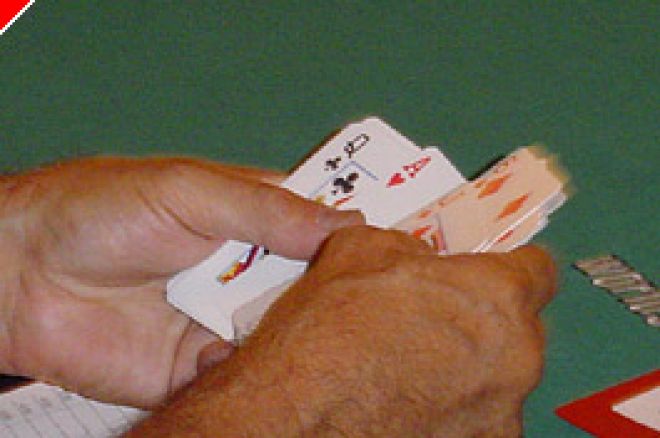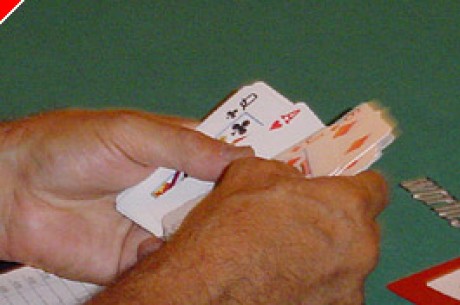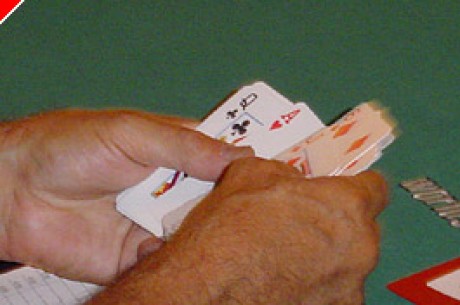Stud Poker Strategy - Looks Good But Isn't - Explained

I published an article on this site on October 7th that set out eight hands that looked good superficially, but that when considered more carefully were really not worth playing. I didn't explain why they weren't any good �C I just asserted it and left it for you to ponder.
The time has come for a more thorough explanation of my reasoning behind each of these hands. In my next few columns I'll take you deeper into them so you'll understand why they should each be folded.
Here was hand one:
You have (5c6s)7d. You are in a game of moderately poor players who tend to call too much. But they aren't morons. You see around the table a 3d, a 7s, a Kc, an As, an 8d an 8c and a Qs. The 3d brings it in, the 7s folds, the Kc calls and the Ace raises. It's to you. You have three to a straight. It looks good. It isn't.
Straights are strong hands but the situation must be optimal in stud for you to shoot for them. Those optimal circumstances are first, that the cards you need are live �C meaning no more than one primary card or two primary and secondary cards are out; second, you don't have to face a reraise; third, that there will be at least three people (and preferably four) in until fourth street; fourth, the straight cards should be relatively high so you have another way of improving on fourth street �C by catching a premium pair; and finally, the game should generally be loose and passive �C so you don't expect raises and re-raises until you initiate them with a made hand..
In the above example too many of your straight cards are dead with two primary straight cards �C the 8s and a secondary straight card, the 3, already exposed in front of other players. Though the game is pretty loose, you are drawing to a low straight with no other way of improving. You aren't being let in for just the bring in, since the Ace raised. So you really must fold �C since your hand has not enough of a future �C even though three consecutive cards look nice.
The second hand was described as follows:
You have (AhKh)9s. You're in a tight and aggressive $10/20 game. A 2d to your immediate right brings it in. A couple of picture cards are out but no Aces. One King is out. One heart is out. Looks good but isn't
This is a trap hand for a hold 'em player who has switched to stud. He has "big slick" in the hole �C a suited AK. Man, it looks sweet �C one of the top three hands in hold 'em. But in stud, with only that 9 and no pair, and especially with a dead King, it's a garbage hand. If you were certain that the hand would not be raised because you were the last to act before the bring-in, and if the King weren't dead, you might take a card off. But in early position, with no pair, no 3-flush, no 3-straight, and with everyone else left to act, just save that bring-in $3.00 and get out of there.
The third hand was:
You have (8s9c)9s. No 9s are out; no spades are out. An Ace calls and a King raises. Everyone folds to you. No good, though it may tempt you. Fold.
On the one hand, having a pair of 9s with a 2-straight flush can be a playable hand. You need to get in cheaply �C certainly for no more than a completion with no likely action to come �C ideally for just the bring in. Your cards must be extremely live. You want to be at least nearly certain that you aren't against a higher pair.
In this example, however, you are surely against a higher pair and possibly facing extensive action on Third Street. An Ace called and a King raised. The raise by the King is certainly not a bluff �C even if he tends to be a wild player. While he might otherwise have raised with nothing more than a King to steal the antes and the bring-in. In this case, with the Ace calling in front of him, he'd be foolish to raise as a steal �C since players who call the bring-in are apt to call a completed bet as well.
In fact, the situation is even worse for you than that. Were you to call the raise by the King, the Ace might well re-raise. This is a common tactic by skilled players holding a pocket pair and an exposed Ace kicker. They figure that they'll either try to knock out the initial raiser by representing a pair of Aces or, even if that doesn't work, they'll get to go heads up against the King when you fold for the extra bet or, if the King comes back with another raise, for two extra bets.
Your position going forward is also likely to be horrible. On fourth street you're likely to be in the middle again �C forced to either call multiple raises or fold. Your only real hope of becoming the best hand would be to pair your 9s. But even if you hit this two outer you'd be unlikely to make much money on it since your opponents would probably give you credit for trips and fold to a bet (unless they hit higher trips �C in which case you'd really be fried).
Nope, fold your pair of 9s even with that straight flush draw. Your facing a difficult and potentially very expensive road.
These were all relatively easy examples. Next time we'll deal with slightly tougher decisions.
Ed note: There are no tough decisions when you play at Ultimate Bet. Sign Up Today.








